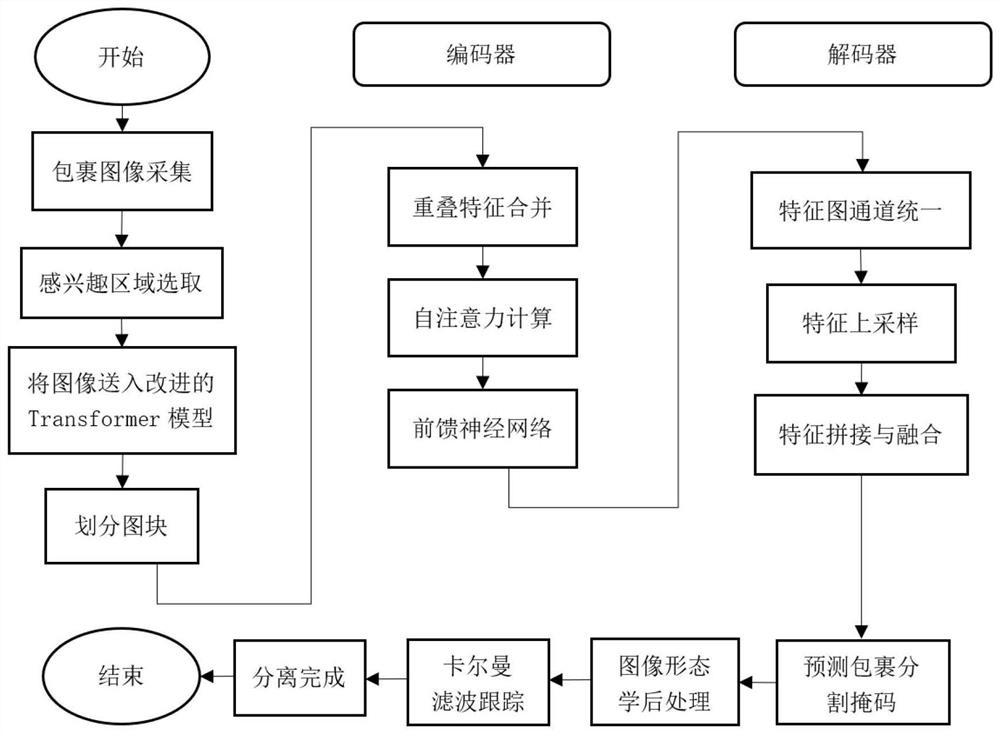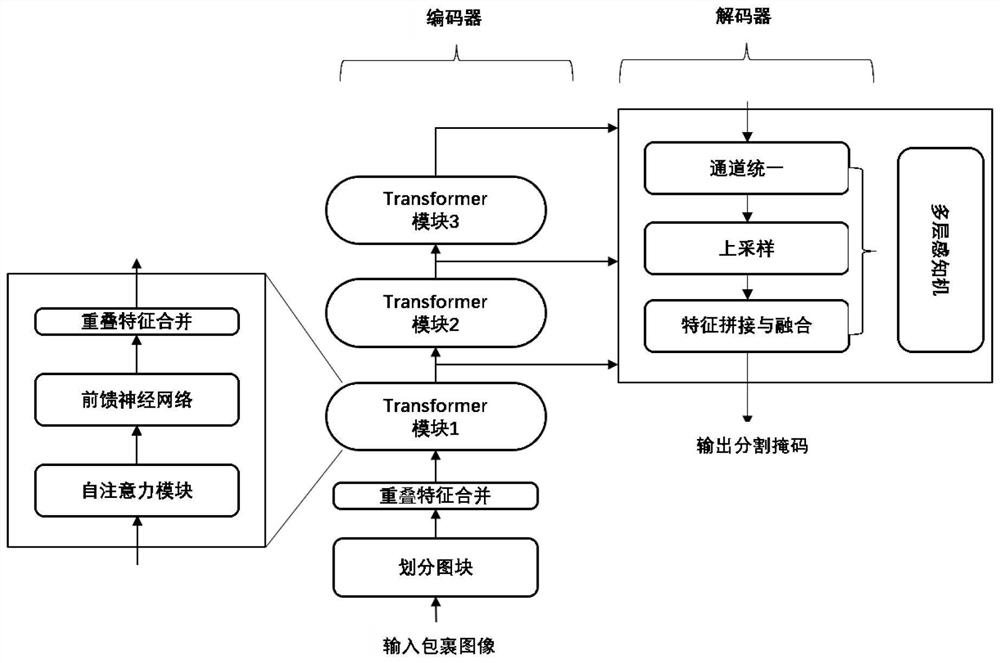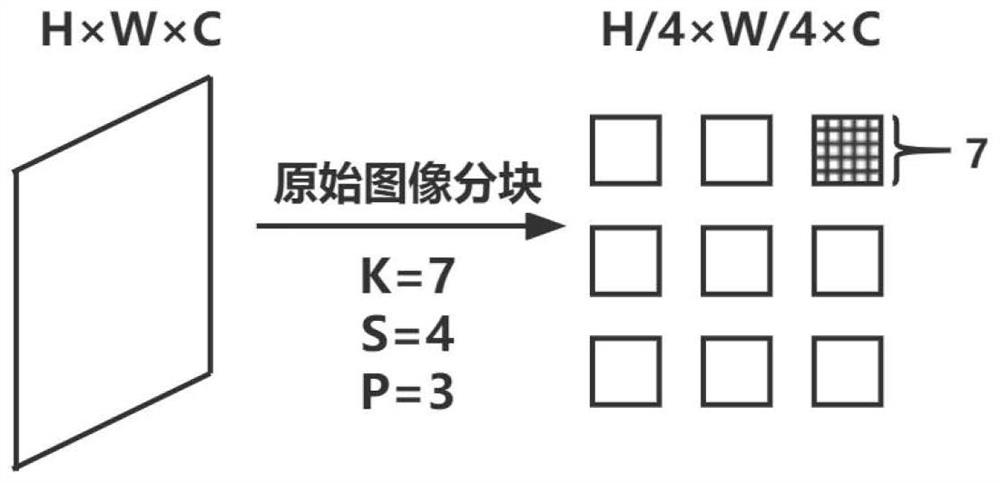Transform-based logistics package separation method
A separation method and wrapping technology, applied in neural learning methods, image analysis, biological neural network models, etc., to achieve time performance advantages, reduce computational complexity, and improve segmentation processing speed.
- Summary
- Abstract
- Description
- Claims
- Application Information
AI Technical Summary
Problems solved by technology
Method used
Image
Examples
Embodiment 1
[0081] see figure 1 and figure 2 , the present invention provides a kind of logistics parcel separation method based on Transformer, comprises the following steps:
[0082] Step 1. Use the camera to collect the image of the conveyor belt logistics package in real time, and complete the selection of the area of interest in the system. In this embodiment, the camera type is an industrial 3D camera with a built-in depth computing chip.
[0083] Step 2. Pass the image of size H×W×C into the improved Transformer semantic segmentation model of the package separation method, such as image 3 As shown, the original image is divided into multiple tiles with local continuity between different tiles. The size of the original input image is H×W×C, where H is the image width, W is the image height, C is the number of image channels, and when the original image is an RGB image, C=3; each image is divided into different The size of the block is 7 × 7 (pixels), and the dimension of the...
Embodiment 2
[0135] In some logistics parcel sorting systems, the status of the conveyor belt remains unchanged. In the video stream captured by the top camera, the background of the picture group composed of adjacent frames is almost unchanged, so the above steps 2 to 7 can be used. The segmentation method is replaced by a Gaussian mixture model separation algorithm (MOG) to enhance the real-time performance of package detection. This embodiment is implemented with the help of the OpenCV open source library. By adjusting the parameters to adapt to the detection of the shadow by the algorithm, the interference of the shadow area in the image is eliminated, so as to pay more attention to the actual characteristics of the package. The specific steps are as follows: 1) In Embodiment 1, the camera The captured image is subjected to median filtering to remove noise; 2) The image matrix is put into the GPU to speed up the detection process; 3) The MOG algorithm is used to segment the image to o...
Embodiment 3
[0138] Since this embodiment uses an industrial 3D camera with a built-in depth computing chip, the depth information of the image can be used to perform foreground segmentation to enhance the robustness of package detection. The industrial 3D camera used in this embodiment can automatically calculate depth information and output a depth image. like Figure 9 shown, the wrapped depth image captured by the depth camera in this embodiment. The basic idea of using depth information for parcel segmentation is to identify the contour by the gradient of the depth map. If the depth difference between two adjacent regions is large, the gradient at the boundary will be very large and can be extracted as a contour. This embodiment is implemented with the help of the OpenCV open source library, and the specific steps are as follows: 1) perform a morphological closing operation on the depth map to reduce the holes in the image; 2) use the Sobel operator to obtain the gradient of the de...
PUM
 Login to View More
Login to View More Abstract
Description
Claims
Application Information
 Login to View More
Login to View More - R&D
- Intellectual Property
- Life Sciences
- Materials
- Tech Scout
- Unparalleled Data Quality
- Higher Quality Content
- 60% Fewer Hallucinations
Browse by: Latest US Patents, China's latest patents, Technical Efficacy Thesaurus, Application Domain, Technology Topic, Popular Technical Reports.
© 2025 PatSnap. All rights reserved.Legal|Privacy policy|Modern Slavery Act Transparency Statement|Sitemap|About US| Contact US: help@patsnap.com



